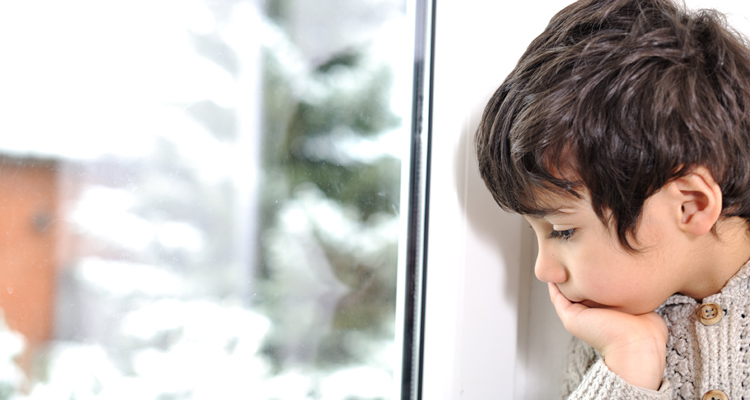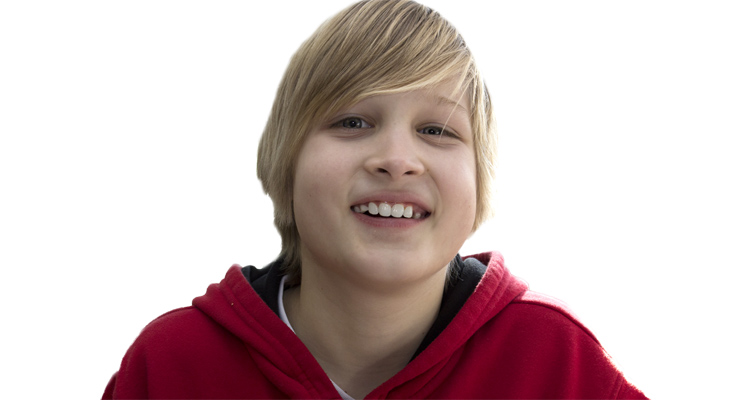We’ve all felt the effects of stress at one time or another. Often, we associate stress with the responsibilities of adulthood. Unfortunately, a stress-free childhood is a thing of the past, perhaps even a thing of fantasy. Our children experience an ever-increasing amount of stress and it’s one of our jobs as parents to teach them early how to handle it. An added bonus of learning to deal with your children’s stress levels is that it will help you manage your own stress levels.
What is stress?
Stress has come to be an umbrella that covers a multitude of the worries and pressures of life. Stress is our body’s reaction to the demands we allow to be placed on us and our ability to handle those demands. Stress gets identified as everything from issues at work, school, and home, to feelings of anxiety over the outcome of our favorite sports. It’s also common to associate stress with the feelings we have from anything that doesn’t go exactly as planned. Stress affects our mood, our job performance, our parenting, and very importantly, our health. Some types of stress are good and some are bad. Learning the difference is part of growing and maturing.
Are our children at risk?
According to pediatrician, Dr. Kyla Berreth, “The simple answer is yes, our children are at risk. But, some stress is normal and can have a positive impact on our lives. It can be motivational and helps us learn to make the gut decisions.” Differentiating good stress from bad stress isn’t always easy. So, taking the steps to minimize the most obvious unnecessary sources of stress is a good first step.
Young children under the age of six haven’t developed enough to understand their stress and adults have a different type of response to stress than children. Bridging that gap so that our responses are proportional in the child’s eyes is very important.
Stress in children can lead, in the short term, to the most obvious reactions such as crying, headaches, stomach pains, toileting accidents, and sleep issues. It can manifest itself with fine motor responses such as hair twirling, fingernail biting, and excessive chewing, as well as sucking, licking, and biting of others. These types of responses are often directly related to immediate and direct sources of stress. Dr. Berreth is even more concerned about reoccurring stress. “Prolonged and more hidden sources of stress can lead to behaviors such as depression and shyness which can lead to the child freezing up in social situations. Stressed children may worry excessively about things that have already happened while also dreading things to come. These children may become obsessed with routines or ritualistic behaviors, food, and objects.”
Many experts find a correlation in the increase in childhood stress to the increase in childhood obesity. The effects of less than ideal eating habits are multiplied by the stress in a child’s life and can lead to excessive weight gain or malnutrition, similar to an adult’s response to stress. The results can have lifelong negative effects on their health. The eating habits developed as a child can potentially extend into adulthood.
What are the sources of stress?
In children, pressure comes from every direction. Some of the sources of stress are needed. Being forced to clean his or her room may make a child feel stressed by the sheer number of toys and clothes in the floor. But, it is a positive and necessary stress that helps teach them responsibility. In contrast, arguing parents causes stress in children whether the child feels directly responsible for the argument or just worries that their parents will “break up”. This is a negative and unnecessary stress that tends to make children withdraw.
Common sources of stress are pretty obvious if you take a few minutes to look for them. In preschoolers, separation from parents can cause stress. For school-age children, academic pressures can cause stress. The schedules we set for our children with extracurricular activities can become overwhelming to both the child and the parent. Many children don’t have time to play creatively or simply relax. The social environment at school where children feel pressure to fit in can be a source of good stress or bad stress depending on the individual child’s personality. Dr. Berreth says, “Many times, this type of stress can lead to bullying. A lot of attention has been placed on the effects of being bullied. It is a wholly unnecessary and painful source of stress for a child, and one that should be eliminated. But, it’s also important to realize that the bully is usually also a child and the act of bullying is often a manifestation of the stresses of that child’s life.”
Parents’ conversations about such things as bills, work troubles, illnesses in the family, and relationship issues are heard by children as though spoken through a bullhorn. Simple things like being friends with your children on Facebook, where they have access to your adult rants and raves, exposes them to potential stress, so it’s vital to lead by example on how you use Facebook. It is very important to monitor your children’s online activities. (One good (and free) solution for limiting what your children can access on the Internet is K9 Web Protection. )
The news is a potential source of stress for kids. Disturbing images of war, terrorism, natural disasters, crime, and the state of the economy become more and more stressful as a child matures into a member of “the world”.
Even forms of entertainment can be sources of stress. Violent video games, harsh movies and television shows, and the lyrics of some music, each can inject a certain amount of unneeded stress into a child’s life. Watch your child playing a questionable video game. If the child’s reaction seems filled with stress and anxiety, it’s probably not a good idea for them to be playing it.
What are some ways to reduce stress?
Dr. Berreth says, “Managing stress is like a waitress walking through a crowded restaurant with a tray of sixteen beverages. It looks extremely difficult, but once you get the hang of it isn’t actually that hard.”
Start with proper nutrition and good eating habits. Is fast food really that cost effective when factoring in the true costs in terms of health? Simple things like having designated eating times and replacing snacks with fruit will make a big difference. Get rid of the sugary drinks and instead serve water or milk. If there is only healthy food in the house, then by default, the children will only eat healthy foods.
Rest. Sleep is a tremendously important part of our lives. Teaching our children to respect sleep is vital. Toddlers to school-age children should get at least 10-14 hours dependent upon their age.
Age Group Recommended Amount of Sleep
Infants 14 to 15 hours
Toddlers 12 to 14 hours
School-age Children 10 to 11 hours
Adults 7 to 9 hours
Source: MayoClinic.com
Talk to your kids directly and individually. When your day has been stressful, playing with your younger kids or talking to your older kids should be a mutually beneficially de-stressing moment. If it isn’t, there may be reason to look deeper into why it isn’t. Eating dinner together as a family is a great way to de-stress. Something as simple as everyone sharing the best parts of their day helps to focus on the positives.
Anticipate potentially stressful situations and diffuse them in advance. For example, if you are stressed about your child’s first day at school, the child will also be stressed about it. If you are excited and can’t wait for it, well, your child will likely feel the same way. Be reassuring and don’t over-talk it.
Participate in aerobic activities with your children.
Evaluate the number of activities in which your children participate. Some children are so busy with activities, most of which require racing all over town to meet schedules, that this can actually increase stress by reducing their downtime. Additionally, it adds to parents’ stress levels. Figure up all the time spent driving and waiting and imagine that time being spent with the child one-on-one in a parent-child activity.
Provide supportive environments that encourage creativity.
Teach your children how to name and identify their emotions. Give them techniques to handle each emotion as it comes up. It’s easy to teach a child to scream if a stranger approaches. It takes more work to show the child how to ask for help if they’re being teased at school.
How to Identify Results
One of the great things about children is their ability to adapt quickly. If you gradually implement lifestyle changes that will help minimize stress, the children will likely not even notice the difference. But, you will. Your children will be happier and healthier. Their grades may improve and their attitude will definitely improve. You will get less pushback and more cooperation.
And one of the best side effects, you will have less stress in your own life. Perhaps you’ll even implement some of the general concepts for yourself. Case in point, if there’s only healthy food in the house, you’ll only eat healthy foods, too (at least when you’re home). Children are more likely to develop good habits if you lead by example.
Where to Turn?
Parents likely already have all the tools and skills needed to reduce and manage their children’s stress. But, when things get overwhelming, it’s smart to seek professional guidance from a team that understands that every question is important.
Children’s Healthcare Center offers a full range of healthcare services for children including routine wellness checkups and sick care. Their staff of four pediatricians and two nurse practitioners will answer any questions about the health of your children. If questions come up in the middle of the night, you can take advantage of their twenty-four hour nurse hotline at 434.799.2111. Their office is located at 201 South Main Street, Suite 2100 in Danville.









